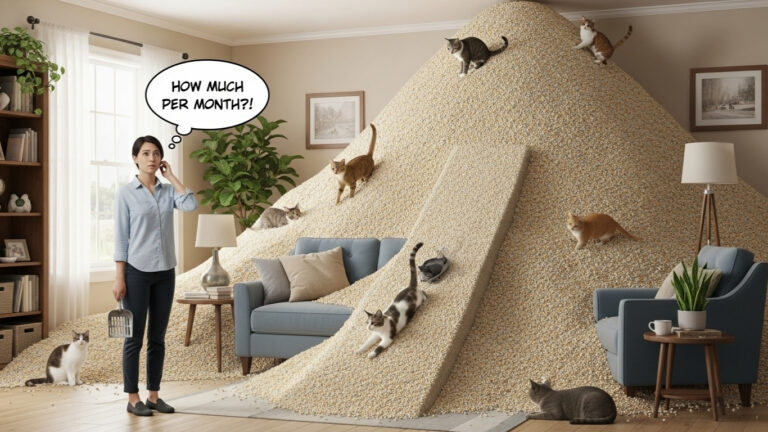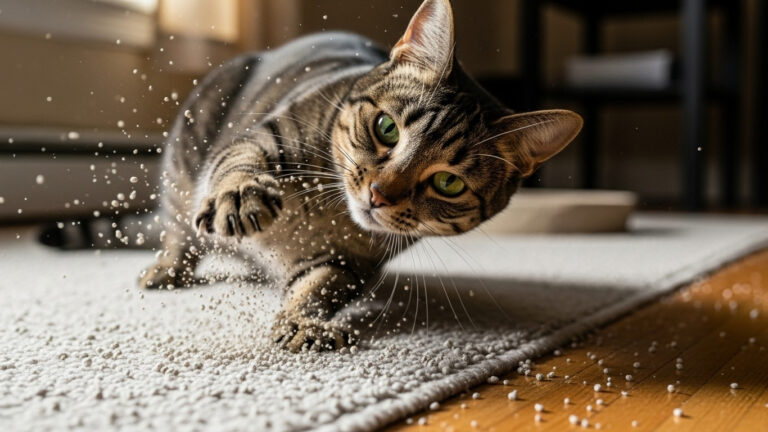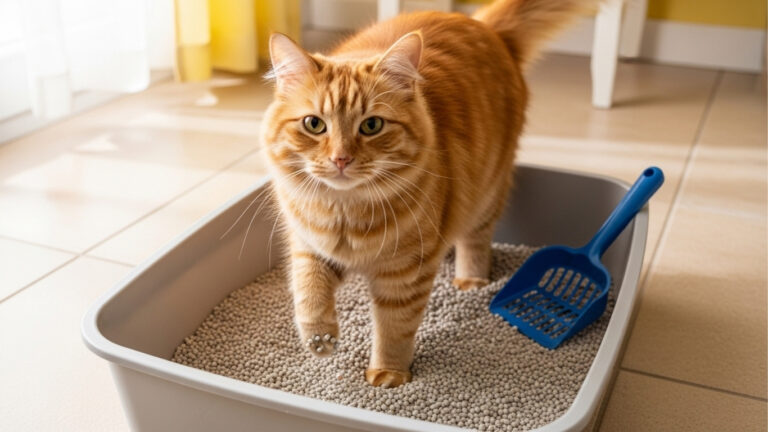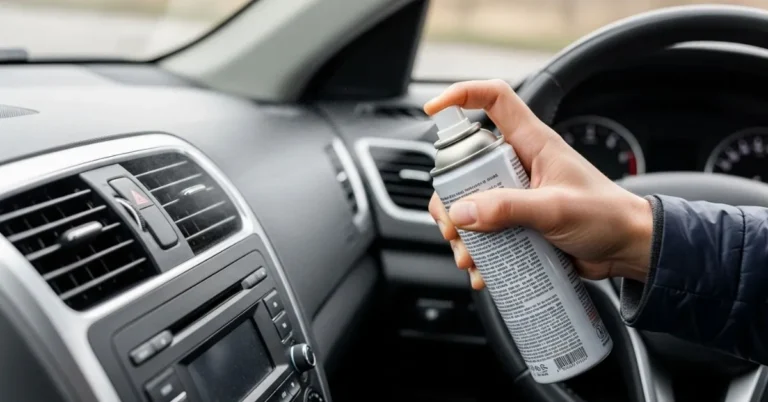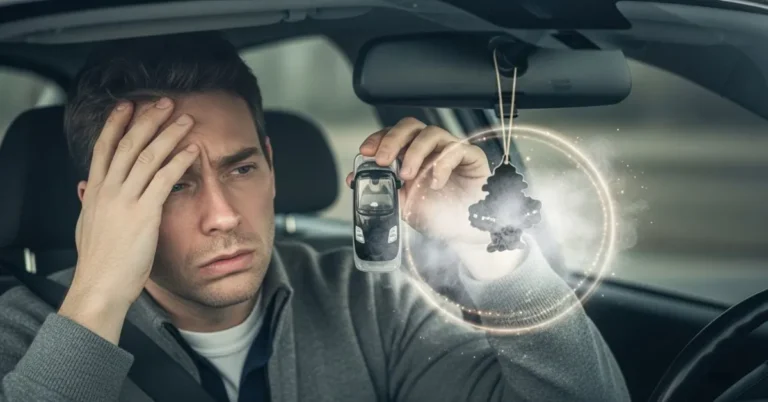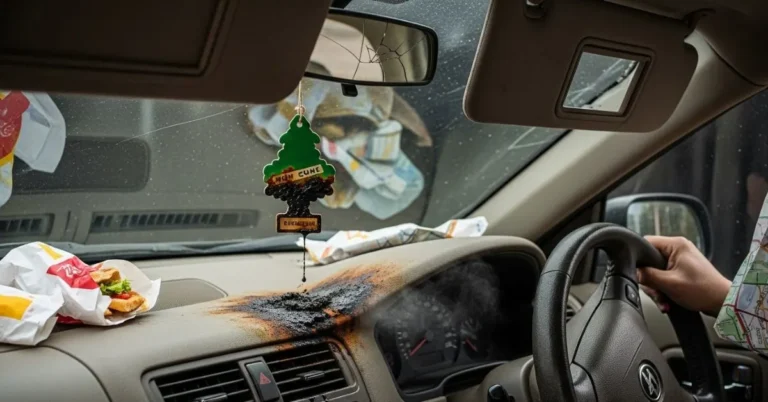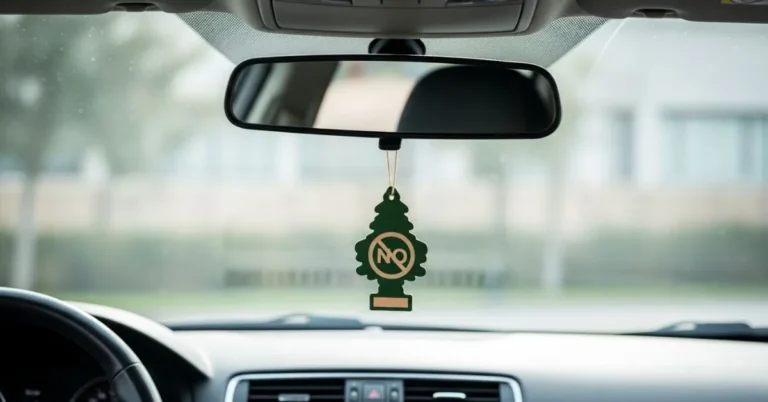Let me tell you a little story about my cat, Daisy. She’s part diva, part detective, and 100% spoiled. One morning, after I topped off her usual clumping clay litter, I noticed she gave it a dramatic sniff, turned around, and made a beeline for my potted plant instead. Not cool.
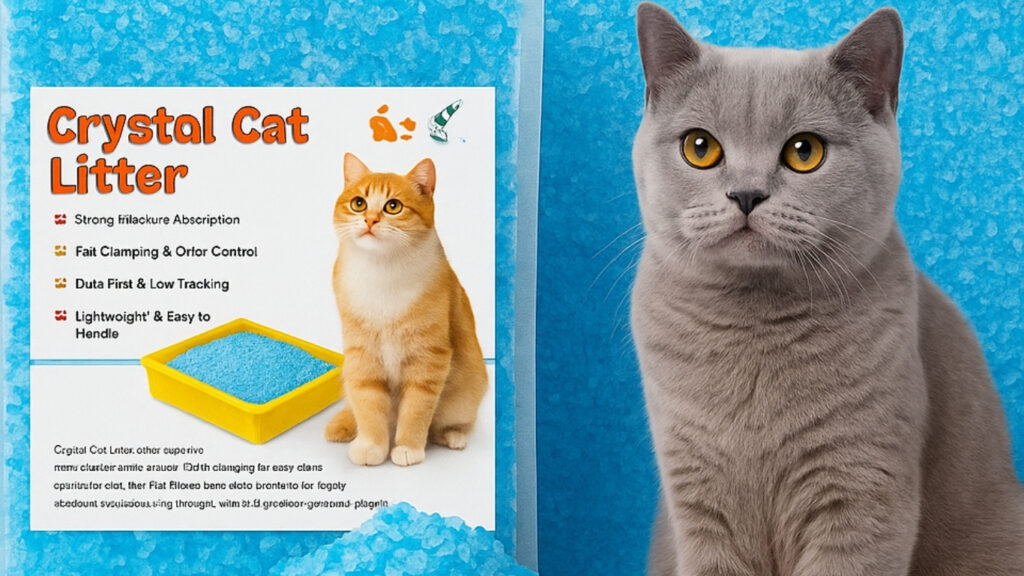
Desperate to impress Her Highness, I researched and stumbled across something that sounded like a cross between a spa product and a science experiment: crystal cat litter. Naturally, the big question hit me like a zoomie at midnight is crystal cat litter safe?
That one question led to a week-long deep dive. Today, I’m passing the scoop to you (pun intended) with everything you need to know about crystal litter, its safety, pros and cons, and expert-level tips for making the switch smooth and successful.
Contents
- 1 What Is Crystal Cat Litter Made Of?
- 2 Is Crystal Cat Litter Safe for Cats?
- 3 Are There Any Health Risks?
- 4 Is Crystal Cat Litter Safe for the Environment?
- 5 Is It Worth the Cost?
- 6 Pros of Using Crystal Cat Litter
- 7 Cons of Using Crystal Cat Litter
- 8 How to Switch to Crystal Litter the Right Way
- 9 Best Informational Crystal Litter Brands to Consider
- 10 FAQs About Crystal Cat Litter
- 11 Expert Thoughts : Is Crystal Cat Litter Safe?
- 12 About the Author
What Is Crystal Cat Litter Made Of?
Let’s get scientific for a moment.
Crystal cat litter is composed of silica gel, a form of amorphous silicon dioxide. This material looks like little translucent beads or grains and is highly absorbent, like the silica packets in shoe boxes or new handbags.
Unlike traditional clumping clay litters that form soggy, heavy clumps when wet, crystal litter absorbs urine into each bead, locking in moisture and odor without the bulk. It’s a favorite for cat owners who want less mess, less scooping, and fewer odor disasters.
But is crystal cat litter safe for your fur baby? Let’s dig deeper.
Is Crystal Cat Litter Safe for Cats?
Here’s the short answer: crystal cat litter is generally safe for healthy adult cats.
These litters are non-toxic, dust-reduced, and specially formulated for feline use. However, “safe” can mean different things depending on your cat’s age, habits, and health conditions.
Here’s when it is safe:
- Your cat is an adult, non-chewer
- They don’t have paw sensitivity or allergies
- You’re maintaining the box regularly
Here’s when to be cautious:
- Kittens or curious cats may try to eat the beads
- Cats with declawed paws may find the beads too harsh
- If your cat has asthma or scent sensitivities, certain scented crystal litters could be irritating
The bottom line is that crystal litter is safe for most cats, but not all. Observing how your cat reacts during the first few days is important.
Read More: How to Attract Cat to New Litter Box – Easy Tips for Cat Owners
Are There Any Health Risks?
While crystal litter is considered safe, it’s not risk-free.
1. Ingestion Hazard
While rare, some cats may chew or swallow the beads. This is more common in kittens. Ingesting even small amounts can cause GI upset or, in worst cases, intestinal blockages.
2. Paw Discomfort
The texture is grainy and can feel sharp or “weird” to sensitive cats, especially seniors or declawed cats. This could be why if your cat suddenly avoids the litter box, this is Scent Sensitivity.
Many crystal litters are infused with fragrances to control odors. However, those perfumes can irritate cats with sensitive noses or respiratory issues.
4. Dust in Cheap Brands
Although silica gel is dust-free, some low-quality options may still produce airborne particles irritating human and feline lungs.
Vet Tip: Choose unscented, low-dust, dye-free crystal litters to reduce potential health concerns.
Is Crystal Cat Litter Safe for the Environment?
Here’s the trade-off: Crystal cat litter is not biodegradable, so it’s not the greenest option on the market.
It’s made from silica essentially synthetic sand and while it doesn’t degrade, it lasts longer than clay. One bag can last 30 days for a single cat, which means less frequent disposal.
So, is it eco-friendly? Not exactly. But it’s not the worst, either.
Sustainability Tips:
- Choose brands with recyclable packaging
- Use only what you need don’t overfill the box
- Consider rotating with biodegradable litter if sustainability is a top priority
Is It Worth the Cost?
Let’s talk numbers.
Crystal litter costs more upfront usually between $15 and $25 for a single bag. Compare that to clay, which can cost half as much.
But crystal litter lasts longer. A 4-pound bag can handle one cat for up to 30 days without a full charge. That means fewer purchases, fewer trash bags, and less overall maintenance.
The time saved may be well worth the investment for busy pet parents (or anyone who hates scooping mushy clumps).
Pros of Using Crystal Cat Litter
Let’s give credit where it’s due. Crystal litter has some pretty sparkly benefits:
- Superior Odor Control: Absorbs ammonia quickly and holds onto it
- Low Dust: Ideal for respiratory-sensitive households
- Long-Lasting: Fewer litter box changes per month
- Lightweight: Easy to pour, store, and carry
- Clean Look: Less mess and no muddy clumps
Cons of Using Crystal Cat Litter
But it’s not perfect. Here’s what to watch out for:
- Non-Clumping: You’ll have to stir daily instead of scooping urine clumps
- Not Flushable or Biodegradable: Trash only
- May Be Uncomfortable: Especially for cats with sensitive paws
- Higher Cost: Budget-conscious homes may prefer alternatives
- Can Be Noisy: Some cats dislike the sound of beads under their paws
How to Switch to Crystal Litter the Right Way
Cats are creatures of habit. A sudden switch could lead to box rejection (read: accidents in places you won’t love).
Transition Tips:
- Start Slow: Mix 25% crystal litter with 75% old litter. Increase gradually over a week.
- Two-Box Strategy: Offer two litter boxes one old, one new to let your cat choose.
- Keep Location Constant: Don’t change both litter and Location simultaneously.
- Watch Behavior: Avoidance or overgrooming could indicate discomfort.
- Use Treats & Praise: Positive reinforcement helps with adjustment.
Give your cat time. Some adapt in a day, others take a week or two. And some well, they’re just too fancy for crystals.
Best Informational Crystal Litter Brands to Consider
Here are a few crystal litters that are popular among pet parents and safe for your furry friend:
- Fresh Step Crystals – Long-lasting, scented and unscented versions
- PetSafe ScoopFree Trays – Designed for automatic litter boxes
- Ultra Pet Crystal Clear Litter – Budget-friendly, unscented, and low tracking
- So Phresh Crystals – Available in unscented and dye-free formulas
Look for ingredient transparency, and always check reviews from other cat parents.
Read More: How Does Crystal Cat Litter Work? A Guide for Cat Parents
FAQs About Crystal Cat Litter
1. Is crystal cat litter safe for kittens?
Not ideal. Kittens often chew or lick everything, and ingesting silica beads can pose risks.
2. Does crystal litter absorb odor better than clay?
Yes! Crystal litter locks in odor immediately, keeping the box fresher for longer.
3. Can I flush crystal litter?
No. Crystal litter must be disposed of in the trash. It is not septic or sewer-safe.
4. Is crystal litter safe for declawed cats?
It depends on the cat. Some may find the texture too harsh on sensitive paws.
5. How often should I replace the litter?
For a single cat, every 3–4 weeks. Multi-cat homes will need more frequent changes.
Expert Thoughts : Is Crystal Cat Litter Safe?
After using it for months and consulting with my vet (and Daisy’s attitude), I can confidently say that crystal cat litter is safe for most adult cats.
It’s not perfect, it’s not compostable, and it’s not for kittens, but it’s worth a shot if you want less mess, better odor control, and an easier cleanup routine.
Start slow, choose a high-quality brand, and let your cat make the final call because when it comes to litter, we all know who’s in charge.

